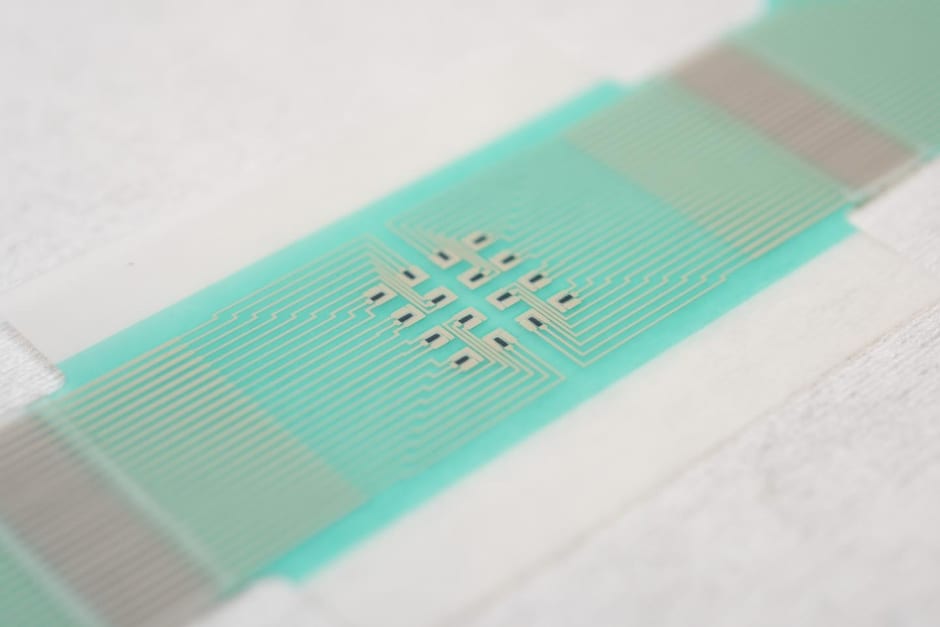Scientists at Bath University have developed a wearable sensor that measures glucose levels through the skin, an advance that could mark the end of finger-prick blood tests for diabetics.

The wearable sensor array draws fluid across a single hair follicle (Credit: Bath University)
The non-invasive patch is said to draw glucose from fluid between cells across hair follicles, which are accessed via an array of miniature sensors using a small electric current. The glucose then collects in reservoirs and is measured. Details are published in Nature Nanotechnology.
Having established proof of the concept behind the device, the researchers hope it can eventually become a low-cost, wearable sensor that sends regular, clinically relevant glucose measurements to the wearer's phone or smartwatch wirelessly, alerting them when they may need to take action.
According to Bath University, an important advantage of this device is that each miniature sensor of the array can operate on a small area over an individual hair follicle, which significantly reduces inter- and intra-skin variability in glucose extraction and increases the accuracy of the measurements taken. Because of this, calibration via a blood sample is not required.
The project is a collaboration between scientists from the Departments of Physics, Pharmacy & Pharmacology, and Chemistry at Bath University.
Dr Adelina Ilie, from the Department of Physics, said: "The specific architecture of our array permits calibration-free operation, and it has the further benefit of allowing realisation with a variety of materials in combination.
“We utilised graphene as one of the components as it brings important advantages: specifically, it is strong, conductive, flexible, and potentially low-cost and environmentally friendly. In addition, our design can be implemented using high-throughput fabrication techniques like screen printing, which we hope will ultimately support a disposable, widely affordable device."
The team tested the patch on pig skin, where they showed it could accurately track glucose levels across the range seen in diabetic human patients, and on healthy human volunteers, where again the patch was able to track blood sugar variations throughout the day.
The next steps include further refinement of the design of the patch to optimise the number of sensors in the array, to demonstrate full functionality over a 24-hour wear period, and to undertake clinical trials.





Red Bull makes hydrogen fuel cell play with AVL
Formula 1 is an anachronistic anomaly where its only cutting edge is in engine development. The rules prohibit any real innovation and there would be...